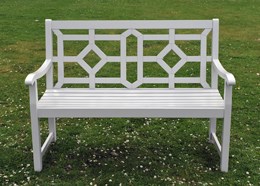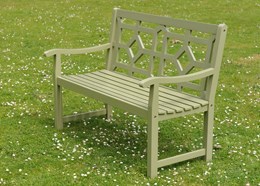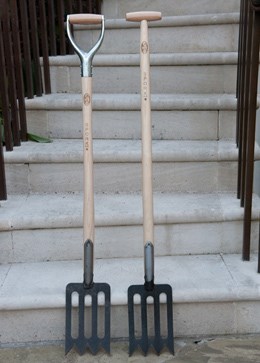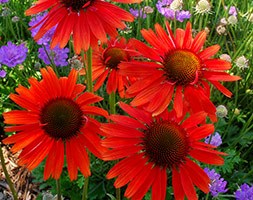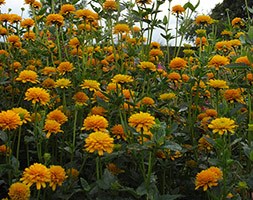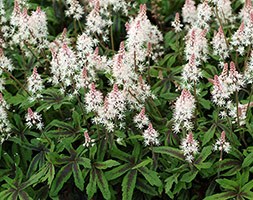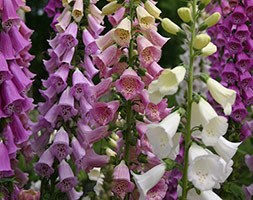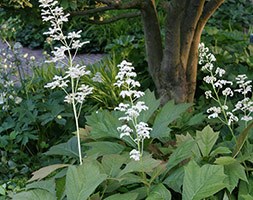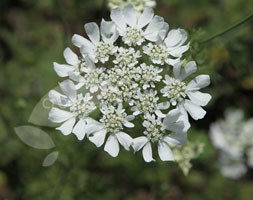New products at Crocus
by Sarah - November 27th, 2014.Filed under: Crocus, New Products.
Crocus just added these new lines
Woburn bench – cool grey £199.99
This bench is produced from satin lacquered FSC Eucalyptus. We choose this sophisticated cool grey colour because it will create a subtle contrast against the back drop of a courtyard or garden. The geometric lattice back is designed to give a classic and contemporary feel. The bench is well proportioned for smaller spaces. This item is supplied partly assembled, It is relatively easy to build with bolts and all the tools you need to put it together. Dimensions: Total Height: 92cm Length from arm rest to arm rest: 122cm Length of the seat: 116cm Width of seat: 48cm Distance from floor to seat: 43cm With ALL outdoor furniture the ideal scenario is to cover the items up with a water proof cover or sheet if you are going to leave it outdoors over the winter months.
Woburn bench – lichen green £199.99
This bench is produced from satin lacquered FSC Eucalyptus. We chose this lichen green colour because it will pick up other green notes in a courtyard or garden, blending in with it’s surroundings but still creating an interesting feature. The geometric lattice back is designed to give a classic and contemporary feel. The bench is well proportioned for smaller spaces. This item is supplied partly assembled, It is relatively easy to build with bolts and all the tools you need to put it together. Measurements: Total Height: 92cm Length from arm rest to arm rest: 122cm Length of the seat: 116cm Width of seat: 48cm Distance from floor to seat: 43cm With ALL outdoor furniture the ideal scenario is to cover the items up with a water proof cover or sheet if you are going to leave it outdoors over the winter months.
De wit spork £59.99
We believe that the Spork is destined to become one of the must-have garden tools and will become an essential part of every gardener’s tool collection. In October 2008 it was voted ‘Testers’ favourite’ by ‘Which? Gardening’ magazine. In the ‘Which? Gardening’ trial the Spork was pitched against 9 other border tools by a team of professional gardeners. The trial was conducted over 4 weeks and all tools were assessed for a range of tasks: loosening and turning soil, clearing weeds and planting perennials and shrubs. Seven of the eight Which? testers would happily buy a Spork and 3 would even swap their conventional spade for one. The serrated cutting edge was sharp and easily cut through soil and small roots. The Spork is good for digging, planting and turf edging. “It’s an ideal compromise between a spade and a fork -I would definitely buy one” said one tester. “It’s great for clay/loam soils, good for digging and turning over soil, and for breaking up compacted ground,” said another. It was light and comfortable to use thanks to the longer length handle. Source ‘Which? Gardening’ October 2008 The Spork was designed by Englishman Robert Todd but is made by De Wit in Holland. It is made from carbon steel with a special burnished finish that protects the metal and allows it to blacken with age like the tools in Edwardian times. The shaft is made from oiled, solid Ash with a traditional T handle. This makes it ideal for allotments and digging over borders. The Dutch are rightly regarded as makers of the finest gardening tools. De Wit have been around longer than anyone. They started in 1898 and the 4th generation of De Wits are now in charge of the business; one is a trained wood turner, the other trained as a blacksmith. De Wit forge their tools from carbon steel in the traditional way. Carbon Steel is naturally tougher than stainless steel and is not prone to metal fatigue. De Wit also burnish their steel. This not only helps to protect it for longer but gives it a patina that blackens it – just like traditional English tools from the Edwardian era. All De Wit tools have turned hardwood handles of oiled Ash. Ash is not only very strong but resists shock better than woods like oak or beech, which is why it was traditionally used for Axe handles. A universal spade and forking tool which penetrates like a fork, digs a spit like a spade. T
Echinacea ‘Hot Lava’ (PBR) (coneflower) £9.99
Position: full sun Soil: most soils, except very dry or boggy Rate of growth: average Flowering period: June to September Hardiness: fully hardy Garden care: Lift and divide congested colonies in autumn or spring. In autumn cut back all dead flower stems to the ground. Coneflower s benefit from a spring or autumn mulch with well-rotted compost.
Heliopsis helianthoides var. scabra ‘Asahi’ (false sunflower) £9.99
Position: full sun Soil: moderately fertile, humus-rich moist but well-drained Rate of Growth: average Flowering period: July to September Hardiness: fully hardy Garden care: Lift and divide clumps every 2 – 3 years and protect young shoots from slugs.
Tiarella ‘Spring Symphony’ (PBR) (foam flower) £9.99
Position: partial or deep shade Soil: cool, moist, humus-rich soil Rate of growth: fast-growing Flowering period: May to July Flower colour: creamy-white Hardiness: fully hardy Attractive, deeply lobed leaves with a small dark blotch in the centre, make a great carpet of foliage throughout the summer. In late spring, slender stems rise up and hold spikes of tiny star-shaped, blush white flowers. This is a brilliant plant for covering the ground in a shady spot – plant it in large numbers for best effect. Garden care: Removing the faded blooms regularly will prolong flowering and encourage more to come. Cut back and compost the spent flower stems in autumn and apply a dry mulch around the crown of the plant to protect against frost damage
Digitalis purpurea ‘Excelsior Group’ (foxglove) £9.99
Position:full sun to partial shade Soil: moist, humus-rich soil Rate of growth: average to fast-growing Flowering period: May to July Flower colour: purple, pink, creamy-yellow or white Hardiness: fully hardy Tall spires of large, well-spaced, tubular flowers in soft shades of purple, pin k, creamy-yellow or white, each one with throats spotted maroon or purple appea r from May to July. These pastel-coloured foxgloves are perfect for the back of a large cottage-style border. Although short-lived, given the right conditions they will perpetuate by self-seeding. Garden care: Ensure that the soil is kept moist in summer. After flowering cut back the flowered spikes to encourage more sideshoots. Cut down to the ground after flowering. Apply a generous 5-7cm (2-3in) mulch of well-ro tted organic matter around the plant in early spring. These plants are mainly biennial, although they will produce plenty of new sideshoots and self-seed freely.
Rodgersia podophylla (rodgersia) £8.99
Position: full sun or partial shade Soil: humus-rich, moist soil Rate of growth: average Flowering period: July and August Flower colour: creamy green Other features: attractive foliage with fabulous autumn foliage Hardiness: fully hardy Upright clusters of creamy green, star-shaped flowers are produced in mid- to late summer. The handsome, palmate leaves are bronze when young becoming smoother, glossy and mid-green with age finally turning bronze-red in autumn. An attractive foliage plant which is perfect for the moist margins of a pond or stream. Best grown in a a sheltered, partially shady site that’s moist but not water-logged. Garden care: Add lots of well-rotted leaf mould when planting. Protect the young foliage against slug damage using beer traps or environmentally friendly slug pellets. Lift and divide congested colonies in early spring.
Orlaya grandiflora (Orlaya grandiflora) £8.99
Position: full sun Soil: fertile, well-drained soil Rate of growth: average Flowering period: June to October Flower colour: pure white Other features:long lasting cut flower Hardiness: hardy annual Lovely, pure white flowers form in big, flat-topped clusters, which resemble lace-cap hydrangeas. They appear throughout the summer above the fine, fern-like foliage. This gorgeous hardy annual has an extremely long flowering period and will often flower until the first frosts. It is often seen in dry, grassy fields and olive groves throughout the Mediterranean so it is particularly good in wild gardens. Garden care: Feed with a liquid fertiliser every two weeks when it is actively growing. Once the plant has finished flowering you can collect the seed and sow immediately to propagate more plants for the following year.







